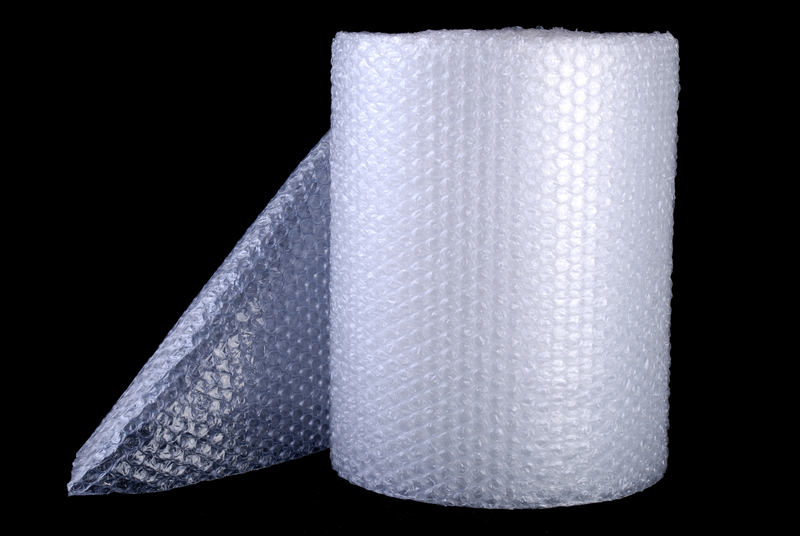Mastering Safe Techniques to Lift Heavy Objects Alone
Lifting heavy objects by yourself can be daunting and potentially dangerous if done incorrectly. Whether you are moving furniture, carrying construction materials, or handling heavy boxes during a relocation, understanding and applying the right techniques is crucial. This comprehensive guide covers safe methods to lift heavy objects alone, precautionary steps, recommended gear, and expert tips to prevent injuries and preserve your well-being.
Why Knowing Proper Lifting Techniques Matters
Lifting and moving bulky items without assistance is a scenario most people face at some point. While it may seem straightforward, improper methods can lead to:
- Muscle strains or tears
- Serious back injuries and chronic pain
- Joint and ligament damage
- Unexpected slips or falls

Preparing to Lift Heavy Objects Alone
Assess the Object and Environment
Before even touching the object, take a moment to:
- Estimate the weight of the object. Can you comfortably lift it yourself? Be realistic about your strength and limitations.
- Analyze the shape and size -- awkwardly-shaped objects are often trickier to handle safely.
- Plan your route: Clear any obstacles, secure loose rugs, or stabilize slippery surfaces to prevent tripping or falling.
- Identify the destination and ensure there's enough room to set the object down safely.
Wear Appropriate Clothing and Footwear
Mastering safe techniques for solo lifting includes gearing up properly:
- Wear sturdy, non-slip shoes for maximum traction and stability.
- Avoid loose or baggy clothing that might get caught or restrict movement.
- Use gloves to enhance your grip and protect your hands, especially with rough or sharp items.
Warm Up Before Lifting
Just like any physical activity, warming up before lifting helps prevent accidents:
- Do gentle stretching exercises especially for your back, legs, and arms.
- A quick walk or light cardio increases blood flow and prepares your muscles for exertion.
Safe Manual Lifting Techniques to Lift Heavy Objects Alone
1. The Proper Stance
A solid stance is the foundation of safe lifting. Follow these steps:
- Stand close to the object with your feet shoulder-width apart for balance.
- Bend your knees -- never your waist -- and squat down to the object's level.
- Keep your back straight and engage your core muscles.
2. Gripping the Object Firmly
Without a secure grip, lifting becomes risky:
- Hold the object as close to your body as possible; this decreases strain on your spine.
- Use both hands and make sure your grip is firm but comfortable.
- If the object has handles, use them. If not, find the most stable points to hold.
3. Lifting with Your Legs, Not Your Back
This is the golden rule of all safe lifting:
- Straighten your legs slowly to lift, keeping your back straight and upright.
- Do not twist or rotate your spine during the lift. Pivot with your feet instead if you need to change direction.
- Keep the object stable and as near to your center of gravity as possible.
4. Maintaining Good Posture Throughout
Good posture is just as important during the entire process:
- Keep your shoulders back and chest forward.
- Your head should remain upright--never look down for extended periods while carrying the load.
- If you need to set the object down mid-way, reverse the lifting steps -- squat down with your knees, not your back.
Using Mechanical Aids for Lifting Heavy Loads Alone
While manual techniques are invaluable, sometimes the weight or size of the item necessitates mechanical assistance. There's no harm in utilizing tools designed for safe heavy lifting -- in fact, it's recommended!
Popular Lifting Devices
- Dollies and Hand Trucks: Perfect for boxes or objects with flat surfaces. Simply tilt the item onto the dolly and roll it to your desired location.
- Furniture Sliders: Slide heavy furniture across hard floors or carpet with ease, reducing friction and effort.
- Lifting Straps: These ergonomic aids distribute weight across your body, making it easier and safer to lift large items solo.
- Lever bars or Pry bars: Great for moving extremely heavy objects with minimal physical strain.
When possible, use the right equipment to complement your strength; it can make all the difference between a simple move and a painful disaster.
How to Use Lifting Straps Safely
Lifting straps are a favorite among moving professionals:
- Place the straps under the object as instructed.
- Adjust the length so the load is balanced.
- Stand close to the item, slip your arms through the loops, and lift with your legs.
Post-Lifting Recovery and Injury Prevention
Cool Down and Stretch
After a successful lift, always take time to:
- Perform gentle stretches to relax your muscles.
- Hydrate and rest if you feel fatigued.
Recognize Warning Signs of Overexertion
Listen to your body. Stop lifting immediately if you notice:
- Sharp or sudden pain in your back, arms, or legs
- Unusual joint popping or discomfort
- Sudden weakness, dizziness, or shortness of breath
When to Seek Professional Help
Not every heavy lifting scenario is safe to tackle alone. Reach out for assistance if:
- The object is too large or extremely heavy for a single person.
- Structural obstacles (like stairs or narrow doorways) make the move unsafe.
- You have a history of musculoskeletal issues or recent surgery.
Expert Tips for Mastering the Art of Lifting Heavy Objects Solo
- Plan ahead: Take your time strategizing the move rather than rushing and risking an incident.
- Break down larger items if possible -- remove drawers, shelves, or detachable parts to reduce weight and awkwardness.
- Work in short, manageable bursts with breaks rather than prolonged exertion.
- Stay hydrated and eat light, energizing snacks for maximum performance.
- Trust your instincts: If something feels off, stop and reassess your method or recruit help wherever possible.
Common Mistakes to Avoid When Lifting Heavy Objects Alone
- Underestimating the weight or bulkiness of the item
- Lifting with your back instead of your legs
- Twisting your body while carrying a load
- Wearing slippery shoes or flip-flops
- Failing to clear your path or destination area
- Not using available mechanical aids or equipment
Avoiding these pitfalls is key to safe solo heavy object lifting.
The Role of Fitness in Safe Lifting
Physical conditioning can play a vital part in your safe lifting capabilities:
- Strengthen your leg, core, and back muscles with resistance training exercises.
- Improve flexibility and balance with yoga or Pilates.
- Maintain a healthy weight to reduce strain during lifting.

Frequently Asked Questions About Lifting Heavy Objects Alone
How heavy is too heavy to lift alone?
Generally, experts recommend a maximum of 50 pounds (22.7 kg) for unaided lifting by a healthy adult. However, the right amount is relative, based on your size, strength, fitness, and the object's design.
Are there any objects that should never be lifted alone?
Objects that are awkward, impossible to grip, or overwhelmingly heavy should never be lifted alone. This includes upright pianos, large refrigerators, safes, and anything requiring two or more people for safe handling.
What should I do if I feel pain while lifting?
Stop immediately. Return the object to the ground using safe technique, rest, and seek medical advice if the pain persists or is intense.
Can I use lubrication like oil or powder to move heavy objects?
It's not advisable. While it may seem useful for sliding, oil or powder can make floors dangerously slippery and increase the risk of accidents.
Summary: Achieving Mastery in Solo Heavy Lifting
Mastering safe techniques to lift heavy objects by yourself is about careful preparation, using the correct stance and grip, utilizing available mechanical aids, and respecting your own limits. Always prioritize safety over speed, and don't hesitate to seek help for especially large or unwieldy items. By following the strategies in this guide, you'll be able to move hefty loads swiftly and securely -- protecting your body and ensuring every lifting task is a success.
Remember: Safe lifting is not just about strength--it's about strategy, technique, and self-awareness. Practice these tips, and you'll soon master the art of lifting heavy objects alone!



